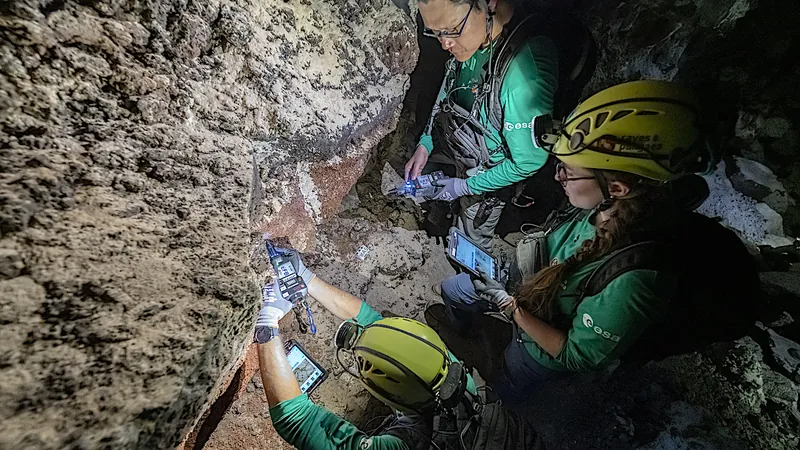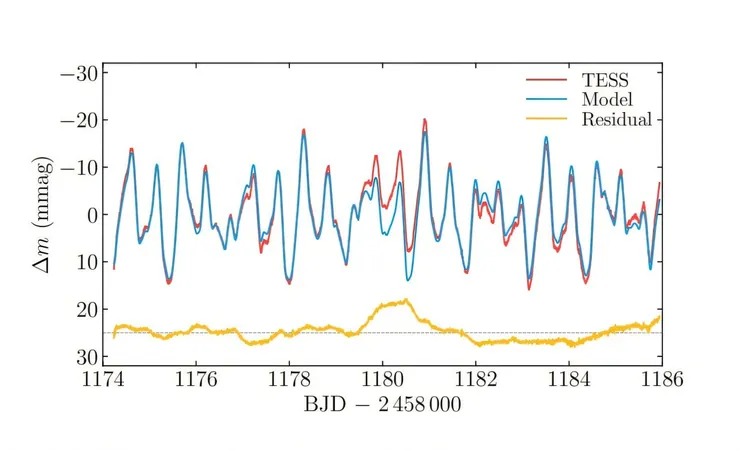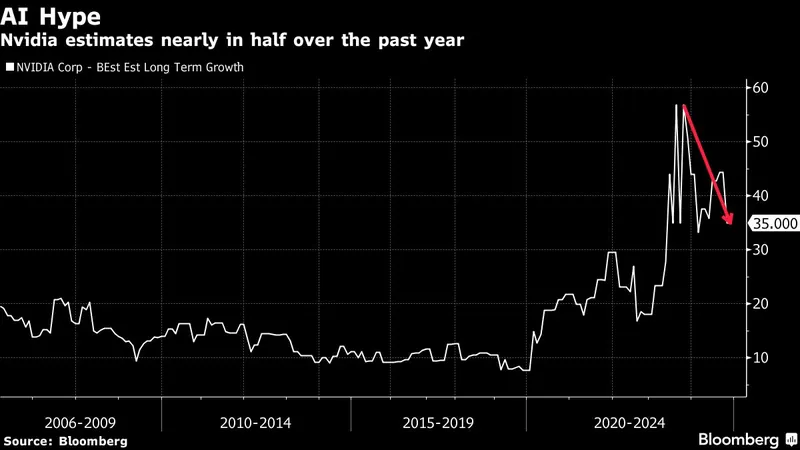
Future-Proofing Photosynthesis: A Revolutionary Approach to Global Food Security
2024-11-18
Author: William
The RuBisCO Challenge
One of the central figures in the quest to boost photosynthesis is an enzyme known as RuBisCO, responsible for trapping atmospheric carbon dioxide (CO2) and converting it into organic molecules, crucial for life on Earth. Despite its importance, RuBisCO is infamously inefficient, mistakenly binding with oxygen (O2) about 25% of the time instead of CO2. This inefficiency is like a claw machine that gathers the nearest object instead of the desired prize.
Amanda Cavanagh, a biochemist at the University of Essex, points out the astounding role RuBisCO plays in our diets. “All the carbon in our bodies, all the carbon that we eat—this all passes through this one enzyme,” she states. However, as the climate warms, RuBisCO's performance is predicted to worsen, presenting a significant challenge for future food security.
The RIPE Project: Pioneering Improvements
The Realizing Increased Photosynthetic Efficiency (RIPE) Project, backed by the Gates Foundation, aims to tackle RuBisCO’s inefficiencies and re-engineer photosynthesis for a more resilient food supply. Under the guidance of Stephen Long from the University of Illinois, researchers are exploring various avenues: optimizing leaf shapes and colors to enhance light absorption, and improving plants' ability to handle excess sunlight. Even minor enhancements in photosynthesis could translate into monumental improvements in crop yields.
“Not only do we need to increase photosynthetic efficiency,” Long explains, “we need to future-proof it against the impending challenges posed by climate change.”
The Global Hunger Crisis
The statistical backdrop for these innovations is stark: an estimated global population of nearly 10 billion by 2058, compounded by the declining efficiencies of traditional agriculture due to climate change. The current maximum theoretical efficiency of photosynthesis in crops hovers at around 4.6%, but actual yields are closer to 1%. This presents a glaring opportunity for improvement.
One potential avenue for significant gains includes a digital model of photosynthesis that Long and colleague Donald Ort have created, allowing for the identification of six pathways to enhance crop yields by up to 50%. Such improvements would not only benefit yield but could offset projected declines caused by climate challenges.
Broadening the Scope: Beyond RuBisCO
While enhancing RuBisCO is a goal, researchers are also examining various other aspects of photosynthesis. High light exposure can overwhelm plants, necessitating processes like non-photochemical quenching (NPQ) to mitigate damage. However, strains of plants with faster NPQ response times can maximize efficiency, leading to increased yields.
Additionally, leaf shapes also matter; variations can control light penetration and absorption, significantly affecting photosynthesis efficiency. For instance, an experiment found that extending soybean leaves from round to narrow shapes yielded greater photosynthesis and crop output.
The Road Ahead: Challenges and Opportunities
Despite these advancements, challenges remain. The journey from lab-scale improvements to field-scale adoption is fraught with hurdles, including regulatory scrutiny, public perception of genetically modified organisms (GMOs), and the economic feasibility of new agricultural practices. Sociologist Jennifer Kuzma emphasizes the importance of trust in building consumer acceptance for GMO products.
“We need to pivot the conversation from ‘How can we gain the public's trust?’ to ‘How can we be trustworthy?’,” Kuzma asserts, advocating for transparency in agricultural innovations.
Conclusion: A Call to Action
The RIPE Project and similar initiatives represent a beacon of hope in securing our global food supply. Researchers are optimistic that integrating multiple improvements rather than isolated changes could yield substantial benefits, re-engineering photosynthesis in a way that meets future demands. As the clock ticks down on impending food shortages, the race to enhance photosynthesis is not just a scientific endeavor but a vital quest for humanity’s survival.
Food security is within reach—if we can reimagine and optimize one of nature’s most crucial processes.









 Brasil (PT)
Brasil (PT)
 Canada (EN)
Canada (EN)
 Chile (ES)
Chile (ES)
 España (ES)
España (ES)
 France (FR)
France (FR)
 Hong Kong (EN)
Hong Kong (EN)
 Italia (IT)
Italia (IT)
 日本 (JA)
日本 (JA)
 Magyarország (HU)
Magyarország (HU)
 Norge (NO)
Norge (NO)
 Polska (PL)
Polska (PL)
 Schweiz (DE)
Schweiz (DE)
 Singapore (EN)
Singapore (EN)
 Sverige (SV)
Sverige (SV)
 Suomi (FI)
Suomi (FI)
 Türkiye (TR)
Türkiye (TR)